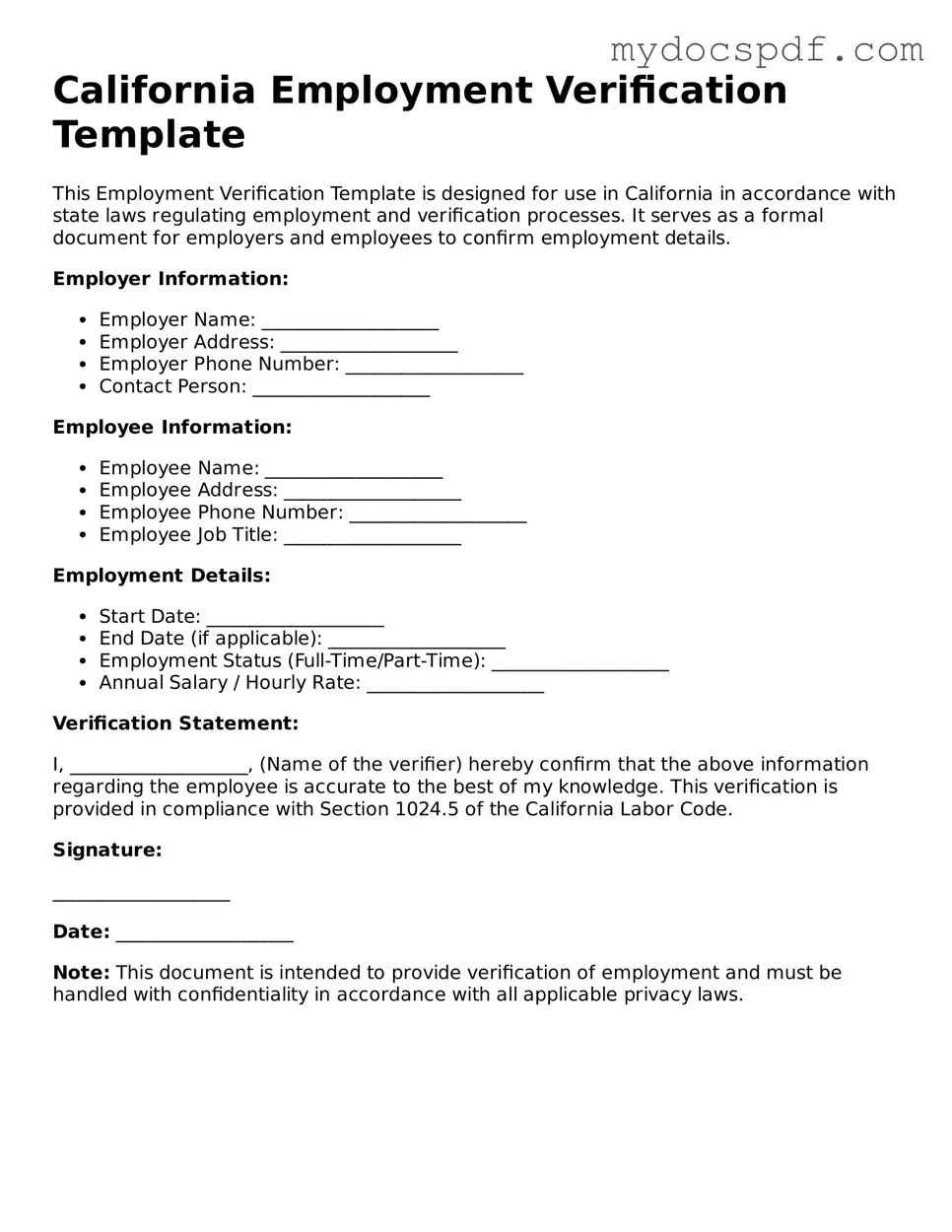California Employment Verification Template
This Employment Verification Template is designed for use in California in accordance with state laws regulating employment and verification processes. It serves as a formal document for employers and employees to confirm employment details.
Employer Information:
- Employer Name: ___________________
- Employer Address: ___________________
- Employer Phone Number: ___________________
- Contact Person: ___________________
Employee Information:
- Employee Name: ___________________
- Employee Address: ___________________
- Employee Phone Number: ___________________
- Employee Job Title: ___________________
Employment Details:
- Start Date: ___________________
- End Date (if applicable): ___________________
- Employment Status (Full-Time/Part-Time): ___________________
- Annual Salary / Hourly Rate: ___________________
Verification Statement:
I, ___________________, (Name of the verifier) hereby confirm that the above information regarding the employee is accurate to the best of my knowledge. This verification is provided in compliance with Section 1024.5 of the California Labor Code.
Signature:
___________________
Date: ___________________
Note: This document is intended to provide verification of employment and must be handled with confidentiality in accordance with all applicable privacy laws.
